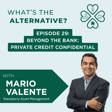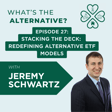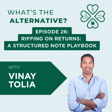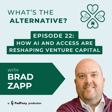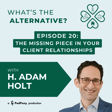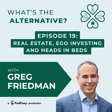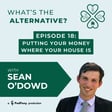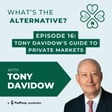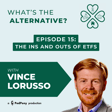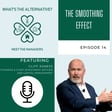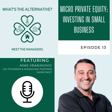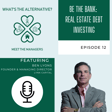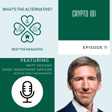
What's the Alternative? | Episode 10 | Alternative Building Blocks featuring Michael Green
Welcome to Banrion Capital Management’s What’s the Alternative Podcast! Join host Shana Orczyk Sissel, the “Queen of Alternatives” Founder & CEO of Banrion Capital Management, as she interviews leaders in the alternative investment space. Learn more about their firms, their passions and about the many different ways investors can use alternative investments to add value in their investment portfolios.
In this episode Shana sits down with Michael Green, Portfolio Manager & Chief Strategist at Simplify Asset Management, to discuss the best approach for advisors to start building portfolio allocation to the alternative space.
Michael has studied markets and market structures for nearly 30 years. He has presented his proprietary research to the Federal Reserve, the BIS, the IMF and numerous other industry groups and associations.
Michael joined Simplify in April 2021 after serving as Chief Strategist and Portfolio Manager for Logica Capital Advisers, LLC. Prior to Logica, Michael managed macro strategies at Thiel Macro, LLC. Prior to Thiel, he founded Ice Farm Capital, a discretionary global macro hedge fund. From 2006-2014, Michael founded and managed the New York office of Canyon Capital Advisors where he established their global macro strategies, managing in excess of $5B of exposure across equity, credit, FX, commodity and derivative markets.
Additionally, Michael has been noted for his work as a public speaker and financial media participant. He is a graduate of the Wharton School at the University of Pennsylvania and a CFA holder.
Learn More About Simplify Asset Management: Simplify Asset Management
Check out Simplify's Research: Simplify Investor Hub
Connect with Michael on LinkedIn: Michael Green
Learn More About Banrion: Banrion Capital Management
Connect with Banrion on 𝕏: @Banrion_Capital
Connect with Shana on LinkedIn: Shana Orczyk Sissel
Connect with Shana on 𝕏: @shanas621
If you are an advisor wanting to check out our platform, we want to hear your feedback!
Important Disclosures:
The opinions expressed on the “What’s the Alternative Podcast” are for general informational purposes only and are not intended to provide specific advice or recommendations for any individual or on any specific security.
It is only intended to provide education about the financial industry. To determine which investments may be appropriate for you, consult your financial advisor prior to investing. Any past performance discussed during this program is no guarantee of future results.
The guests featured on this program are participants on Banrion Capital Management’s platform. As such Banrion may receive payment for their participation as a platform partner.
Any indices referenced for comparison are unmanaged and cannot be invested into directly. As always please remember investing involves risk and possible loss of principal capital; please seek advice from a licensed professional.
Investments are not FDIC-insured, nor are they deposits of or guaranteed by a bank or any other entity, so they may lose value.
Investors should carefully consider investment objectives, risks, charges and expenses. This and other important infor
